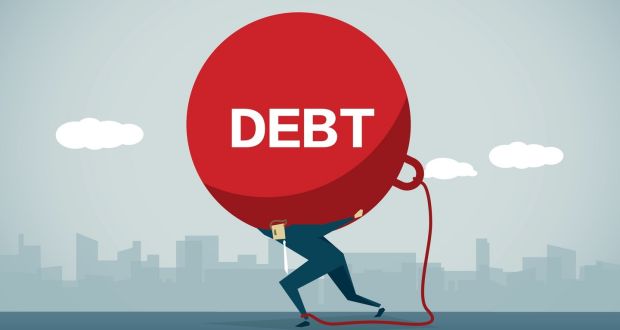The Central Bank of Ghana’s January 2023 Summary of Economic and Financial Data has disclosed Ghana’s public debt stock as Gh¢575.7 billion at the end of November 2022, about 93.5% of Gross Domestic Product (GDP).
Public debt stock is the total amount of money, including total liabilities, borrowed by the government to meet its development projects.
The data from the Central Bank revealed that the debt stock increased by ¢108.3 billion between September and November 2021, indicating that the country’s debt was unsustainable.
This triggered a debt restructuring in which the Domestic Debt Exchange is expected to end on January 31, 2023.
The external component of the total public debt, as recorded in the data shot up to $29.2 billion (¢382.7 billion) in November 2022, equivalent to 62.1% of GDP.
This was from $28.4 billion (¢271.7 billion) in September 2022 and $28.3 billion in December 2021.
From the figures, about 37% depreciation of the cedi to the dollar in 2022 was the main cause of the massive jump in the cedi component of the external debt.
As captured in BoG’s data, domestic debt stood at ¢194.7 billion at the end of December 2022, about 31.6% of GDP. This is against ¢195.7 billion recorded in September 2022 and ¢193.1 billion in November 2022. About ¢170 billion of the domestic debt is being restructured for a period of 12 years.
The report however did not provide data for the financial sector resolution debt and other liabilities such as the energy sector debt.
However, government’s fiscal deficit, which is the difference between total revenue and total expenditure of the government to GDP, stood at 9.8% in November 2022, from 7.4% recorded in September 2022.
Bank of Ghana’s data also revealed that Ghana’s net international reserves ended 2022 at $2.44 billion, about 2.7 months of import cover. This is against $6.07 billion recorded in December 2021, about 4.3 months of import cover.
Net international reserves represent the difference between reserve assets and reserve liabilities.
According to the data, the country’s Balance of Payment at the end of December 2022 also stood at a deficit of $3.63 billion, as against a surplus of $510.1 million in December 2021.
This was as a result of a significant decline in the Capital and Financial Account Balance which stood at a deficit of $2.17 billion in December 2022, compared with a surplus of $.3.30 billion in December 2021.
The negative Capital and Financial Account Balance was as a result of net portfolio of investments outflow of $2.05 billion in December 2022.
Net international reserves have been declining from $6.07 billion in January 2022, about 4.4 months of import cover, largely due to the selling of investments by foreign investors.
Concerning the amount by which the value of the country’s exports exceeded the cost of its imports, Ghana recorded a trade surplus of $2.75 billion in 2022, about 3.8% of Gross Domestic Product.
This far exceeded the surplus of $1.09 billion recorded during the same period in 2021.
The significant growth in trade surplus was due to significant proceeds from gold and oil exports, whilst net imports also fell.
Importantly, total exports went up by 18.1% year-on-year to a staggering $17.40 billion in December 2022. Total exports for 2021 was $14.72 billion.
Meanwhile, Crude oil exports totalled $5.42.61 billion in December 2022, higher than the $3.94 billion recorded in October 2021. This is mainly due to price effects.
Gold export earnings also went up by 30% to $5.33 billion, supported by increased production volumes triggered by the positive response from small-scale gold exporters.
However, the data captured a record of lower prices and low cocoa purchases, indicating that cocoa receipts declined to $2.21 billion in December 2022, compared to $2.83 billion in December 2021.


Comments are closed.